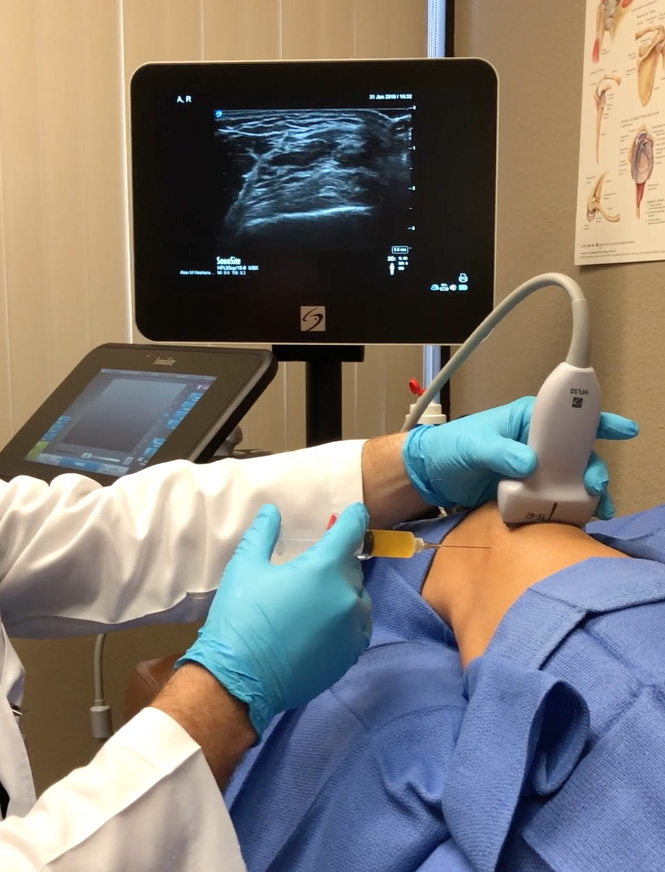The BIOS Orthopedic Institute
Alberto J. Panero, D.O.
Regenerative Orthopedics Specialist & Sports Medicine Specialist located in Sacramento, CA
The BIOS Orthopedic Institute in Sacramento, California, specializes in the use of platelet rich plasma (PRP). Consult with Dr. Alberto J. Panero to see if this therapy is for you. Most orthopedic applications of PRP are considered “off label uses”, and must be considered on a case by case basis. For more information on off label uses, please click here:
What is platelet rich plasma?
Platelet Rich Plasma is defined as platelets concentrated at a greater than physiologic level suspended in a plasma medium.
How Do Platelets Promote Healing?
Think about what happens when you cut your finger. During the initial stage, platelets migrate to the area and form a fibrin clot. This clot achieves hemostasis and the bleeding stops. As the platelets clot they degranulate and release a milieu of growth factors and cytokines that activate the body’s innate healing response. Over the next days to weeks these growth factors change the microenvironment of the wound, reducing negative inflammatory proteins, and creating a healthier, positive microenvironment that’s conducive to healing. As result, the cut scabs over, the scab subsequently falls, and new tissue grows and heals the wound.
Is all PRP created equal?
NO, all PRP is not created equal. In fact, PRP must be tailored to each individual patient. An experienced physician can adjust the ratios of platelets, white blood cells, and red blood cells, by calculating the amount of blood that is taken versus the speed and time that the blood is centrifuged for. Specialized extraction methods can then be used to further concentrate or dilute the preparation to the desired PRP ratios. In general terms, PRP can be divided into two groups, leukocyte (white blood cell) RICH or leukocyte (white blood cell) POOR.
What happens the day of the procedure?
Your blood is drawn into a PRP collection syringe. The blood is transferred to the centrifuge system. This process takes approximately 5-20 minutes and it is done in-office, same day of the procedure.
Once the centrifugation is done, the concentrated platelets and plasma are manually extracted from the blood into the injection syringe. The PRP is then precisely guided to the site by either ultrasound, fluoroscopy, or needle arthroscopy, under sterile technique.
Although one injection can be very helpful, studies support the use a series of 3 injections given one week apart in various settings. The injections can be relatively painless or quite painful, depending on the location and type of procedure that is being performed with the PRP. Depending on the area injected, the doctor may administer a regional anesthesia to decrease the pain from the injection itself. We will take as many precautions to make the experience as comfortable as possible.
What can I expect after the procedure?
You go home the same day of your procedure. Depending on the area injected, you may have to wear a brace and/or use crutches for a short time. The injection area will be sore for about 1-2 weeks. Depending on the are being treated and your pain tolerance, you may need pain medication the first few days. Your post-procedure regimen will include physical therapy, 2 X week, for at least 4-6 weeks. We see you for follow up around the 3 week, 6-8 week, and 3-4 month marks. We are always available however if any questions or issues may arise.

